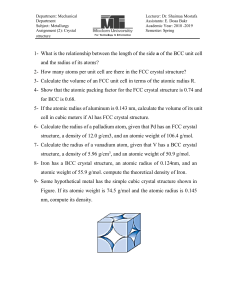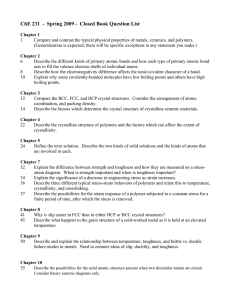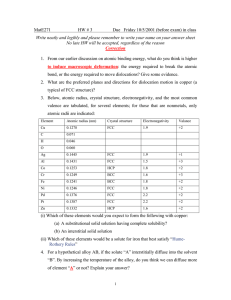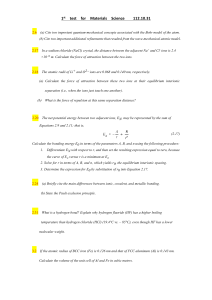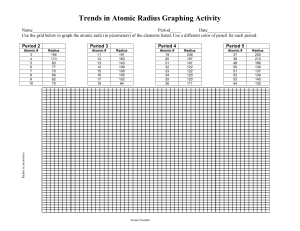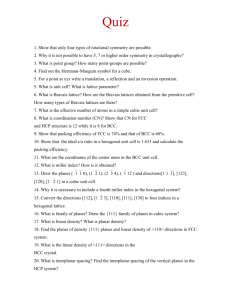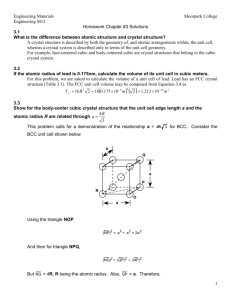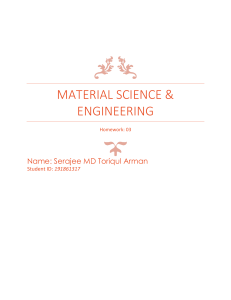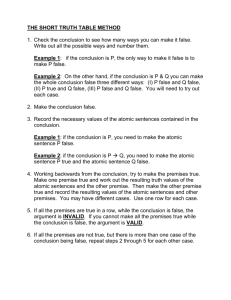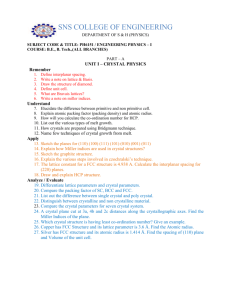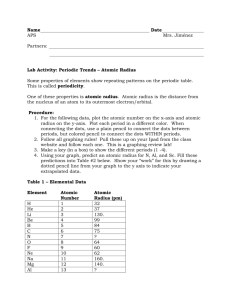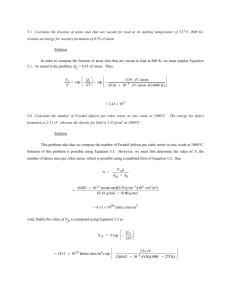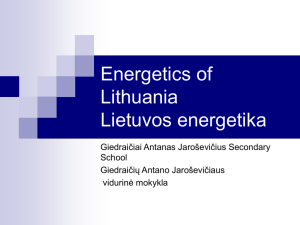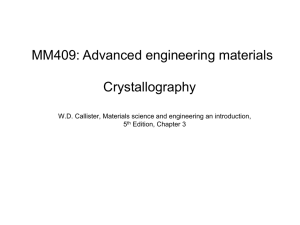chapter 3
advertisement
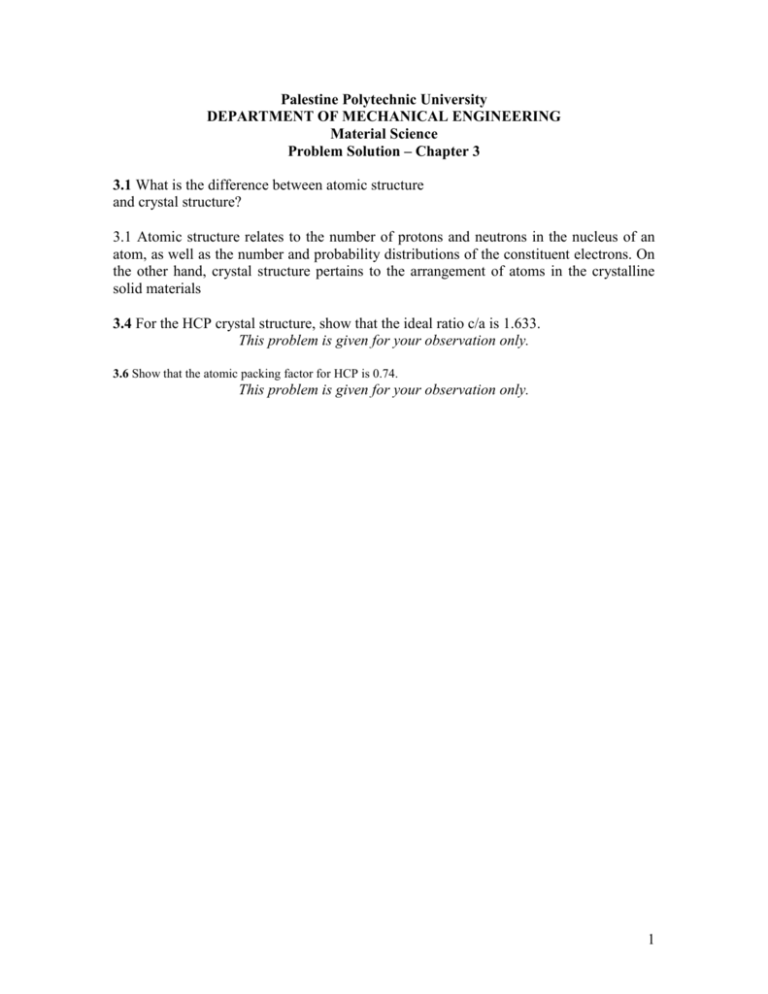
Palestine Polytechnic University DEPARTMENT OF MECHANICAL ENGINEERING Material Science Problem Solution – Chapter 3 3.1 What is the difference between atomic structure and crystal structure? 3.1 Atomic structure relates to the number of protons and neutrons in the nucleus of an atom, as well as the number and probability distributions of the constituent electrons. On the other hand, crystal structure pertains to the arrangement of atoms in the crystalline solid materials 3.4 For the HCP crystal structure, show that the ideal ratio c/a is 1.633. This problem is given for your observation only. 3.6 Show that the atomic packing factor for HCP is 0.74. This problem is given for your observation only. 1 2 3 4 3.7 Molybdenum has a BCC crystal structure, an atomic radius of 0.1363 nm, and an atomic weight of 95.94 g/mol. Compute and compare its theoretical density with the experimental value found inside the front cover. 5 3.8 Calculate the radius of a palladium atom, given that Pd has an FCC crystal structure, a density of 12.0 g/cm3, and an atomic weight of 106.4 g/mol. 3.10 Some hypothetical metal has the simple cubic crystal structure shown in Figure 3.23. If its atomic weight is 74.5 g/mol and the atomic radius is 0.145 nm, compute its density. 3.22 List the point coordinates for all atoms that are associated with the FCC unit cell (Figure 3.1). 6 7 8 9 10 11 12 3.51 (a) Derive linear density expressions for FCC [100] and [111] directions in terms of the atomic radius R. (b) Compute and compare linear density values for these same two planes for copper. 13 14 3.54 (a) Derive planar density expressions for BCC (100) and (110) planes in terms of the atomic radius R. (b) Compute and compare planar density values for these same two planes for molybdenum. 15 16 3.58 Determine the expected diffraction angle for the first-order reflection from the (310) set of planes for BCC chromium when monochromatic radiation of wavelength 0.0711 nm is used. 17 18 19

